Ephemeral Pleasures: Investigating Micro-exhibitions
Duluth writer Hannah Dentinger goes straight to the source to get the skinny on the factors driving what appears to be an increasingly popular trend toward short-lived micro-exhibitions, which often run for just one or two days.
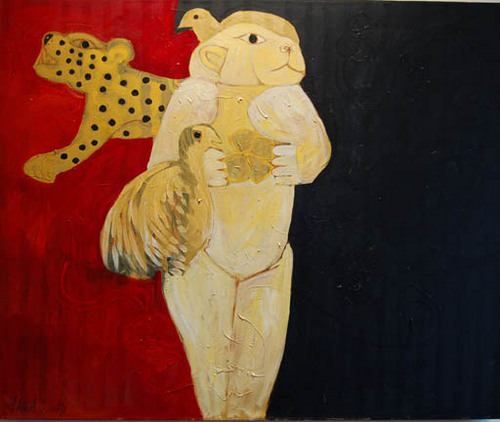
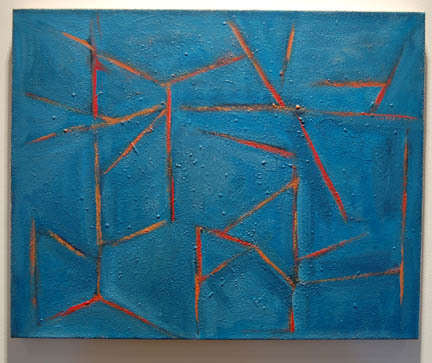
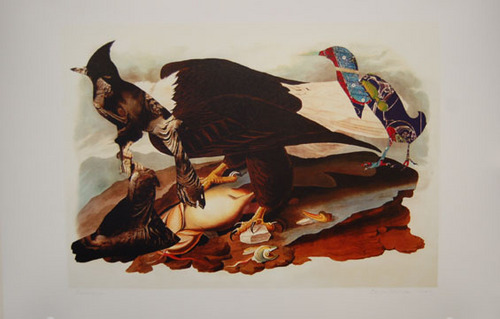
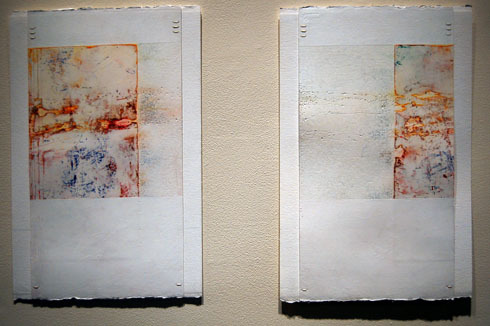

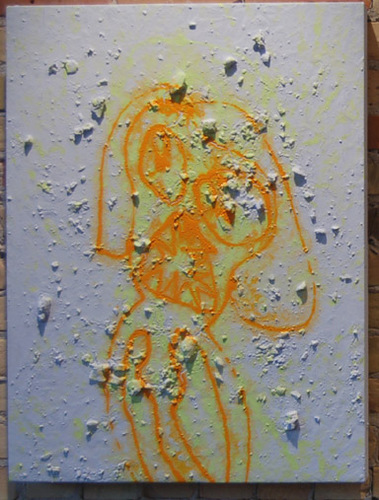

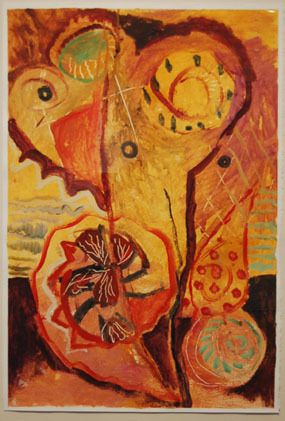
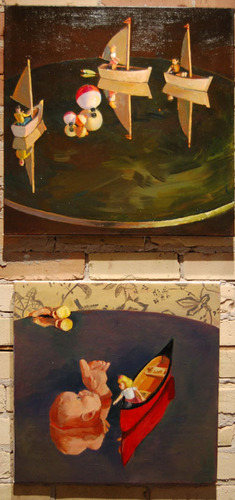

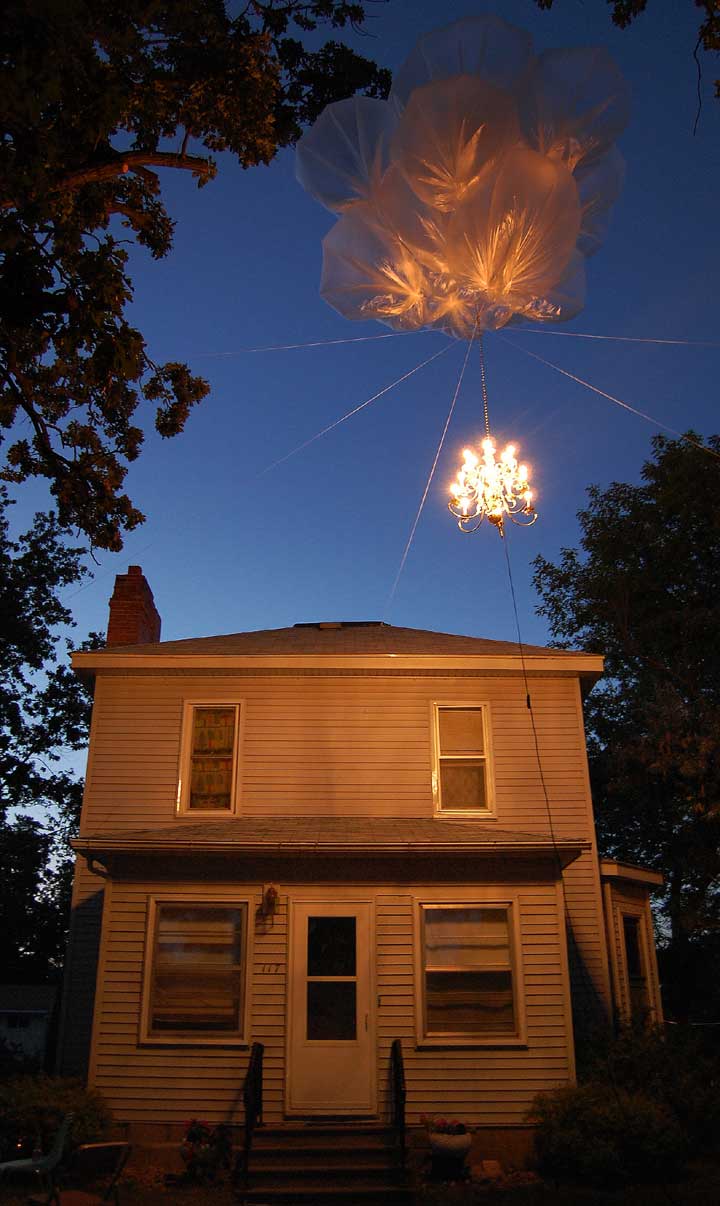
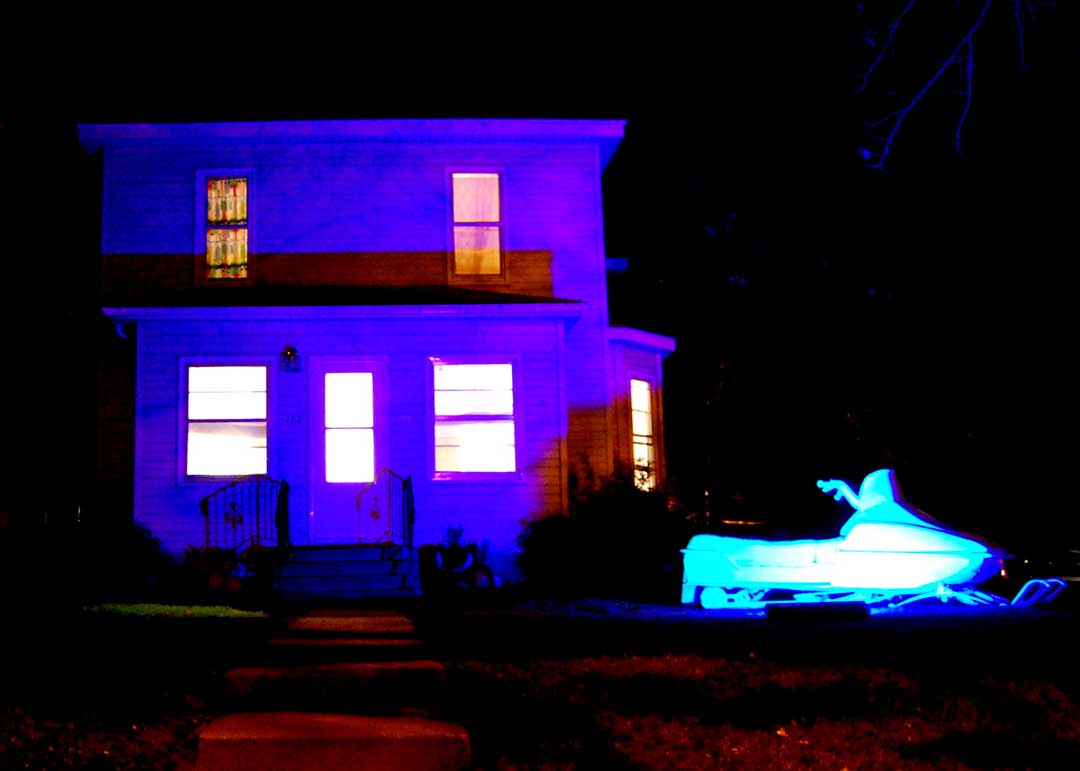
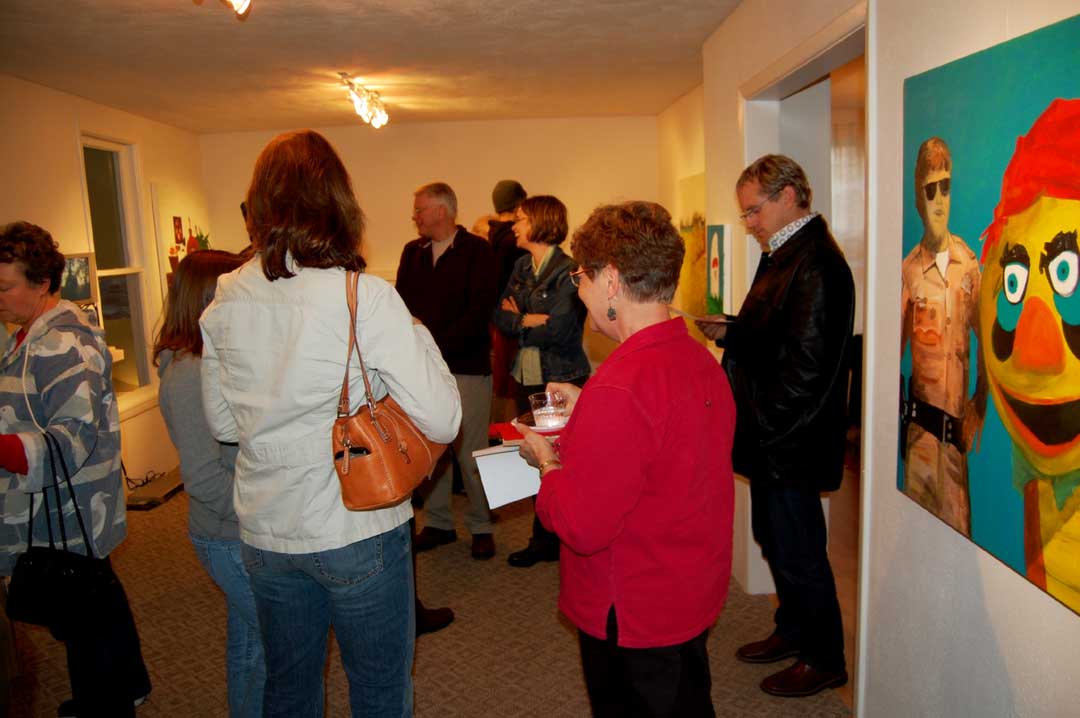
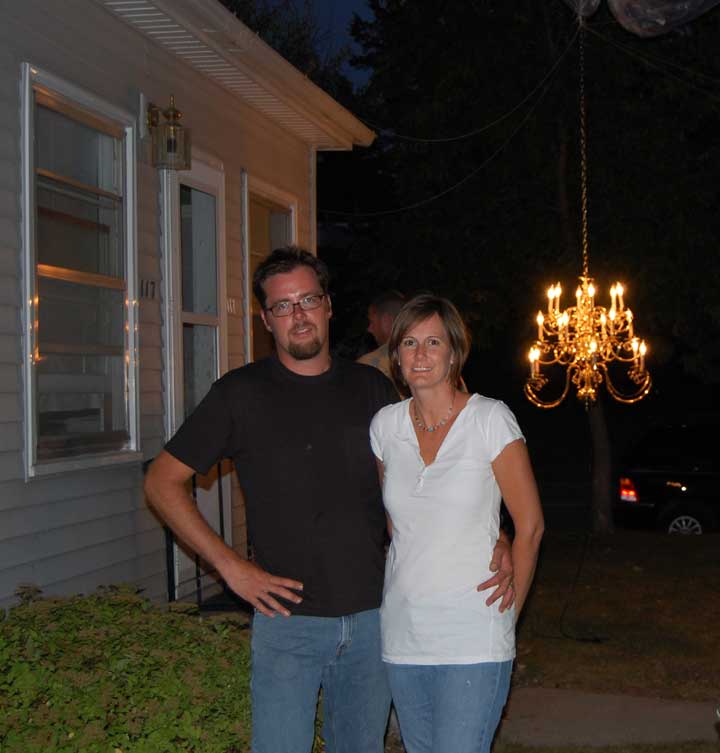
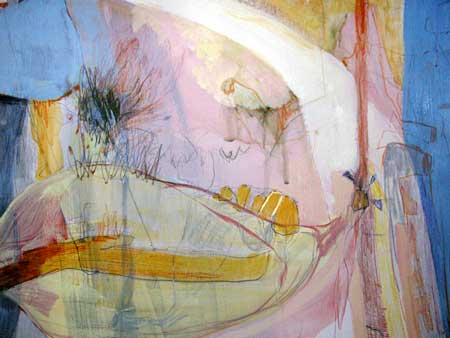
AT THE BEGINNING OF FEBRUARY, THE SECOND ANNUAL Ten Artists, One Weekend exhibition winked in and out of existence at Duluths Washington Studios Gallery. A wide-ranging body of work came together briefly under one roof, leaving an impression on the viewers mind like the ghost of a cameras flash.
Eric Dubnicka wears many hats: a practicing artist, he is also Preparator at the Tweed Museum of Art. And hes a resident of Washington Studios, an elementary school which, in 1992, was converted into cooperative artist residences. Some apartments still boast cloakrooms with enough pegs to accommodate thirty-some schoolkids’ coats, and the wooden floorboards of one space still bear the red-and-blue markings of a basketball court.
Dubnicka is the prime mover behind Ten Artists, One Weekend. I caught up with him and with painter Adu Gindy, whose work was also featured in the exhibition, at the Washington Studios Gallery the day after the well-attended opening. Eric hates to see space go to waste, says Gindy of the origin of the exhibition. Although shows succeed one another fairly regularly at Washington Studios, there are gaps in the schedule. Opening hours, too, can vary. It would be misspeaking to say its not well run, Dubnicka explains wryly. Its not run at all. In fact, the overwhelming motivation for what Gindy calls a short sharp shock of an exhibition, then, has to do with practical concerns; finding volunteer staff sufficient to maintain a longer show poses a real challenge. Thats why Saturday afternoon found the two artists, themselves, on duty in the gallery.
A similarly mundane rationale lies behind the one-night exhibitions at New London, Minnesotas ARThouse. Co-owners Lisa Bergh and Andrew Nordin transform their home into a gallery a few nights a year, but both of them also work outside their home-cum-gallery: Bergh at a small nonprofit and Nordin as an adjunct professor. Bergh explains their division of this labor of love. For the most part, I handle the PR and marketing, sponsorships and event preparationsmeaning I put the wine and cheese outand Andy manages the installation of exhibits, our graphic design needs and the website. We work collaboratively to determine exhibits. And when it comes time to clean the house for eventswell, even our son has to pitch in there!
Dubnicka and several other participants in Ten Artists, One Weekend also live where they work, at Washington Studiosa short commute, certainly. There’s an additional advantage; as Dubnicka succinctly put it, I know the space. I live here. I have access to it. For Bergh and Nordin, the overlap between gallery and home is a key factor, too: One night exhibits are of benefit to us because 362 days a year the function of ARThouse is to serve as our home. Regular gallery hours, Bergh says with amused understatement, would make living here a lot more difficult for our family.
The time frame for Ten Artists, One Weekend was short from conception through execution. In December, Dubnicka found out about a February spot in the gallery: I contacted friends and artists in town, people whose work I know and who I like working with. All the artists had about a months notice. Dubnicka is a painter and sculptor, but his day job is exhibition installation. His familiarity with both sides of the undertaking, therefore, is key in making sure an event like this goes smoothly. I tried to streamline the process, he says. We had a Wednesday night window for drop-offs. Then on Thursday, I made cuts with Ken [Bloom], and we talked about the work and arranged it. That only took two-and-a-half hours or so. It took another five or six hours to hang, to do the lights. We publicize the closing on Sundayand at 5 oclock, we take it down. Tweed Museum Director Ken Bloom has curated this Washington Studios Gallery event two years in a row. I wanted Ken on board, because I wanted to be part of the show but didnt want to curate it as well as hang and arrange it. And, Dubnicka confesses, grinning, I knew if I got Ken on board, no one would say no. People dont argue with Ken as much!
I chose people who I knew would show up, Dubnicka continues. I see and talk to them all the time, so if they dont pick up their work on Sunday, I can take it to the Tweed and I know that theyll stop by to get it soon. Indeed, right on cue, Russ Gran, whose pen-and-ink drawings of nudes enlivened one gallery wall, walked in for a chat. After the success of the 2007 weekend-long exhibition, Dubnicka says, it was in the back of my mind to do another. I like these rogue short-term shows, he continued. 99 percent of the people show up at the opening anyway.
Lisa Bergh agrees. I think more people do come out because they know it is one night only, she reflects. I have always felt that we would probably not really get much more traffic by having traditional gallery hours. It would just be the same amount of visitors spread over a longer time frame. ARThouse exhibitions typically attract 100-150 visitors, who come for the cutting-edge art and stay for the relaxed atmosphere. We want the primary experience to be about viewing and contemplating art and creating a comfortable environment for visitors to speak with and learn more about our exhibiting artists, their ideas and methodologies, Bergh explained. I would say come for the experience and have a great time.
Eric Dubnicka feels the same: I love big openings. Its fun to have everyone shoulder-to-shoulder, Adu Gindy echoes. I dont throw partiesbut I know how to throw an opening, Dubnicka said. I dish out some wine…and then I dont feel as guilty about going to Adus party next week! The Duluth art community is fairly close-knit, and Dubnicka, Gindy and others see one another socially as well as working together. My goal is to be more popular in Duluth than you, Adu! Dubnicka quips. Were like the art version of Hillary and Barack, muses Gindy. Which one am I? I dont look that good in a dress.
All ten participating artists have established reputations in Duluth, but Gindy feels that a short-term exhibition of this type offers an opportunity to step out of your comfort zone. Her own work in the show included a large canvas where a lemon-yellow, simian creature was placed boldly on a background of red and black patrolled by a polka-dotted feline.
Lisa Bergh has a slightly different perspective on short-term shows. I believe it is the non-traditional setting, not the length of the exhibit that allows artists to push the boundaries, she explains. Traditional venues often have a bottom line to meet, while independent or ephemeral spaces allow for the idea of art for arts sake. At the same time the non-traditional spaces provide artists with unique challenges that force the artist and audience to reconsider what a gallery is. Work sells well at both the Washington Studios Gallery and ARThouse, but Bergh revels in the latitude that the independent gallery setting offers artists. Because we have such low overhead I never have say to an artist, Now, can you make small blue paintings that are priced to sell? I say, Make or do whatever you want. Make something amazing, unique, and intriguing and make it as big as you want! Dont get me wrong, she clarifies, I want people to understand that the art here is available for purchase; but I dont want the need to make a buck to limit an artist in terms of what he or she exhibits.
In 2008, ARThouse has a diverse lineup planned. In April, Chicago artist Ashley E. Towne will present mixed media works on paper. Julys event will feature computer-generated multimedia experiences and prints from Bill Gorcica of St. Cloud, Minnesota. And, in October, Duluths Kristina Estell and David Bowen will collaborate on installations.
At Ten Artists, One Weekend, meanwhile, the diversity of contemporary art was also in evidence. Chris Monroes Gretel, missing her Hansel, wandered through a birch copse, while Germany was represented by a blond boy in lederhosen leading a dancing bear across a stage decorated in the primary colors of an animal cracker box. Wendy Rouse contributed tightly-controlled paintings of toys. One could have been a scene from Gullivers Travels: a Lilliputian doll in a toy canoe stares at the boulder of a baby doll head and disembodied hand points skywards. Shades of Planet of the Apes. A collage by Carla Stetson, Procession, splices an Audubon-esque bald eagle with photos of crumbling statues.
Jen Dietrichs contributions reflect her interest in American iconography: photographs of John and Robert Kennedy are juxtaposed with Catholic accoutrements stored, appropriately enough, in a cigar box. Abstraction was represented by Terry Millikanwhose work has the palette and patina of Second World War-era paintingas well as Bill Shipley (he characterizes his paintings as abstract calligraphy:” runic markings in orange scar an aquamarine plane) and Cecila Ramon. Ramons quiet pieces in oil on paper resemble enamel rusted, rubbed, and abraded. Eric Dubnicka rounded out the show with subtle variations on vaguely menacing themes. The paintings on display at Ten Artists, One Weekend evoked the toothy maw of a lampray. You can still catch Dubnickas solo show on display at Washington Studios until March 2.
About the writer: Hannah Dentinger writes on art and literature. She is also a scholar of Welsh literature.
Photo credits: The photos of artwork from the recent exhibition Ten Artists, One Weekend appearing with the article are drawn with permission from Makers: Voices of Northern Arts and Music,” a blog by Ann Klefstad, the arts and entertainment writer for the Duluth News Tribune.